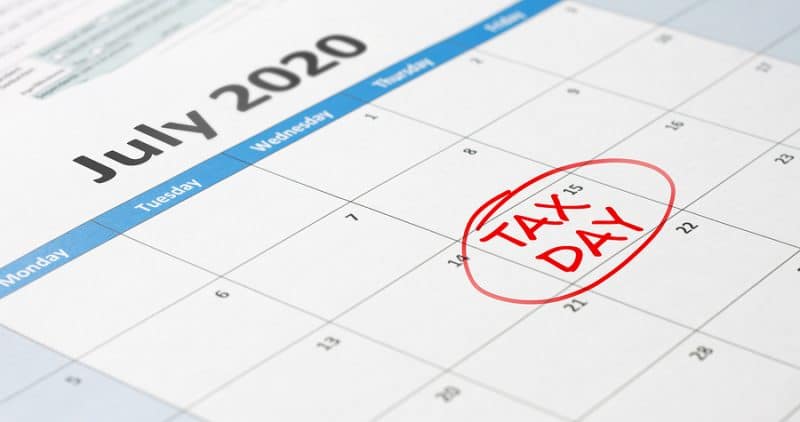It’s late December. Bells are jingling, Santa’s arrival is questionable (that’s if he’s allowed into NSW or stuck in quarantine) and retailers are squeezing in the last of the Christmas rush… And then Sydney receives the worst Christmas present of all – another round of Coronavirus spreading quickly through the NSW capital. It has been the year where bush fires destroyed homes, a global pandemic brought upheaval, and then months of uncertainty, and consumers were stuck in their homes changing the way businesses operate. Through all this ambiguity, there is one thing small businesses can do to bring clarity to their company; and that is to see (and/or hire) an accountant that can offer accountant and tax services.
You may be questioning why it’s important to see an accountant and tax professional during this time of year.
After all, it’s the holidays – and it’s time to take a well-deserved break. However, accounting and tax assistance is a necessity by the end of the year 2020 that has been. Earlier this year, the Australian Government introduced measures to lessen the impact of COVID-19 by decreasing the risk of otherwise viable businesses being placed into external administration. Australia’s economy plunged into its first recession in almost 30 years, and these changes were put in place to help avoid a potential wave of financial distress and corporate collapse. The measures are there to prevent the closure of companies that are experiencing short term financial distress as a result of COVID-19. In addition, the measures in place protect small business owners from potential personal liability and allow business owners to feel confident to continue trading through the COVID-19 pandemic crisis. Has all this jargon lost you at COVID-19? You can see why the importance of hiring an accountant and tax service is a necessity.
The temporary insolvency and corporations’ laws that raised the thresholds for issuing statutory demands will end in just over a week on 31 December 2020. If you believe you are just scraping through this year, don’t fear – hire an accountant and taxation professional to assist you in managing your finances in 2021, and help you navigate the changes in legislation. Debt collection in 2021 will be on the rise, and businesses that are close to insolvency may be liquidated by the order of the court. If your business goes into the hands of a liquidator – the liquidator has the authority to take possession of a director’s personal items and assets for company debts via an insolvent trading claim. If you have not maintained and kept your business financial records in good order – and as required by the Corporations Act, your company may be assumed to be insolvent. Therefore, to avoid the stress and headache of insolvency, all companies should be getting their accounting records up to date now! Once again – there is no better time to get in touch with your accountant and tax professional to ensure all your records and data are in order.
As of 1 April 2020, your business Good’s and Service Tax (GST) has been added to Pay as You Go (PAYG) and the Super Guarantee Charge (SCG) as potential personal liabilities of directors in the case that a Director Penalty Notice was issued by the Australian Taxation Office (ATO). However, if you already work closely with your professional accountant and tax professional, your activity lodgements would never be more than three months overdue. And of course – your accountant and tax service would ensure that the super guarantee charge is always reported on time. If this is the case, the most ATO can do is issue your business with and Director Penalty Notice. Directors can avoid all accountability within 21 days by negotiating a settlement with the ATO or placing the business into involuntary liquidation of voluntary administration.
The super guarantee amnesty ended on 7 September 2020. The amnesty allowed employers to disclose and pay previously unpaid super guarantee charge for the quarters between 1 July 1992 through to 31 March 2019 without incurring the administration component. The super guarantee charge made to the Australian Taxation Office under the amnesty was also tax-deductible. Now that we are in the post-amnesty period, all disclosures of super guarantee shortfall will now incur the administration component (in addition to nominal interest) and will not be tax-deductible. It’s not an ideal situation making a late submission, and there are numerous penalties for failing to comply with your super guarantee obligations. However, even though the amnesty has ended, and you may be up for penalties, there are still benefits in making a voluntary disclosure due to the Australian Taxation Office having the power to remit certain penalties.
There is a lot to absorb when it comes to super guarantee and business insolvency. If you are unsure about how your business is dealing with the situation, the best you have a meeting with your professional accountant and tax service. Their expertise will guide you in the right direction.
To add to the complication of the insolvency laws of 2020, in 2021 expect to see reforms. There will be the introduction of a genuine debtor-in-possession restructuring process which involves a small business restructuring practitioner to engage and assist the board present the terms of the restructuring proposal to creditors. This process has two eligibility criteria. Firstly, employee entitlements are required to be on time, and secondly, lodgements with the Australian Taxation Office are required to be up to date. This debt restructuring process is an opportunity for any business that has suffered during COVID-19 to develop a proposal, present it to creditors and secure a recovery quickly.
Another reason to visit your accountant is to take advantage of the current low-interest rates. Interest rates are at a record low, and this is the time to seize up your old debt and refinance! Low-interest rates allow you to refinance old debt cheaply and give you the opportunity to expand your operations, acquire property/equipment, or diversify your product. If you take advantage of the low-interest rates and invest in your business, it will be a requirement to regularly provide your financial institution with relevant and recent financial statements and reports to negotiate capital. Your accountant and taxation service can assist you in preparing all documentation required and can also work together with you in securing capital. Accountants have the knowledge and skills that a business owner may lack when it comes to growing a business and ensuring the business financials remain healthy.
Single Touch Payroll is just around the corner – and by 1 July 2021, all businesses must be utilising it. If your business has not even thought about this process, you need to be on the phone pronto with your accountant and taxation service.
If you’re a business owner of a small business and you want to enter 2021 feeling confident that you are starting the new year all jolly, then now is the right time to get in touch and have an important meeting with an accountant and taxation professional. It may be a tough road ahead, but there are plenty of ways that you can ensure your business will continue to service in 2021. By outsourcing, seeking advice, and working together with financial advisors/accountants, you can set yourself up for a successful road to recovery. Boost your confidence in your business’ road to recovery in 2021. Have a chat with us at RT Taxation accountant services for small businesses. We want you to feel confident in our financial expertise while you focus on building your business.










